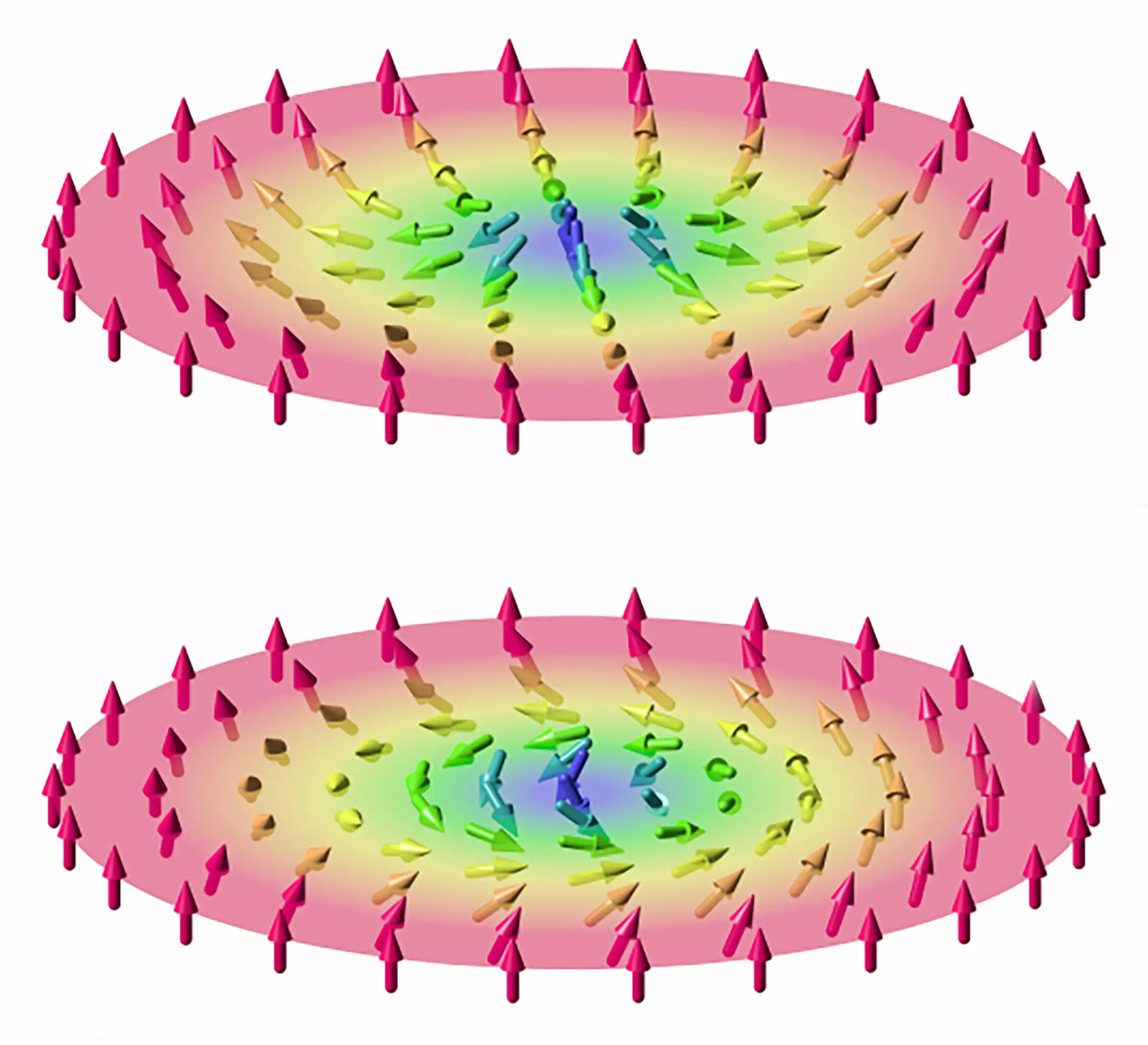Scientists at the National Institute of Standards and Technology (NIST) have made significant advancements in the field of spintronics by using neutron imaging and a reconstruction algorithm to study the 3D shapes and dynamics of atomic magnetic arrangements known as skyrmions. This breakthrough research has the potential to revolutionize information processing and storage by utilizing magnetic states instead of electrical charge, resulting in significantly lower energy consumption and faster switching time. In this article, we will explore the implications of this research and the possible future applications of magnetic skyrmions.
Spintronics, a portmanteau of “spin” and “electronics”, is a field of study that focuses on utilizing the inherent magnetic polarity, or spin, of atomic particles and nanostructures for processing and storing information. Unlike traditional binary information processing which relies on electrical charge states, spintronics has the potential to overcome the limitations of heat generation and resistance encountered in current semiconductor-based methods. This is achieved by leveraging stable magnetic states, such as skyrmions, which require less current and allow for faster switching between states.
Unveiling the Mystery of Skyrmions
The research conducted by the NIST-led team primarily focuses on understanding the behavior of a specific type of atomic arrangement called a magnetic skyrmion. Skyrmions are vortex-like formations of atoms that occur naturally in certain atomic lattices when exposed to specific magnetic and electrical properties. In two dimensions, skyrmions manifest as disk-shaped formations with varying magnetic fields based on the atom’s position. However, in bulk materials, these 2D disks can stack vertically to form 3D tubes that extend to the top and bottom surfaces of the material.
To thoroughly understand the nature of skyrmion tubes and their associated defects and asymmetries, the research team employed neutron tomography. Bulk samples containing cobalt, zinc, and manganese were subjected to a beam of neutrons, which scattered in different directions based on the shape of the skyrmion tubes within the lattice. By incrementally rotating the samples and combining the resulting “slices” using a shape-reconstruction algorithm, the team was able to create precise 3D images of the skyrmion tubes.
The groundbreaking 3D images obtained shed light on the impact of defects and imperfections in the lattice on the shapes and propagation of skyrmion tubes. In a perfect crystal lattice, the tubes would be straight and consistent, permeating surface to surface. However, real-world materials contain localized defects that interrupt the tubes. The ability to visualize and understand how these defects affect the behavior of skyrmion tubes paves the way for future material tuning and optimization for spintronic applications.
While the concept of spintronics may seem exotic at present, the possibilities it unlocks are boundless. With further research and development, spintronic-based technologies could become commonplace, offering consumers hard drives that are entirely reliant on spintronic properties. These spintronic hard drives would provide denser storage capabilities and higher efficiency, all while consuming significantly less energy. The potential impact of spintronics on various industries, including electronics, computing, and data storage, is immense.
The NIST-led research on magnetic skyrmions and their 3D shapes and dynamics is a significant contribution to the field of spintronics. By employing neutron imaging and advanced reconstruction algorithms, the team has advanced our understanding of how defects and asymmetries in material lattices impact the behavior of skyrmion tubes. This breakthrough may pave the way for future technologies that leverage spintronic properties, offering more efficient, compact, and powerful information processing and storage solutions. As we delve further into the realm of spintronics, the possibilities for innovation and advancement are truly limitless.


Leave a Reply